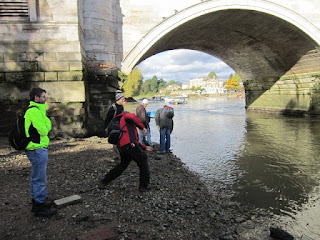After heavy rain the previous day, the clear weather was ideal for a spot of hedge work. With limited hedge suitable for laying, our task was to trim the hedges lining the gravel path around the nature reserve. These hedges are important habitat for nesting birds and also discourage people and dogs from disturbing water vole habitat on the edge of the island's ditches. This week, the ditches have been de-silted, allowing water to flow freely again. As well as trimming the island's hedges, there was just enough time to plant some yellow iris along the recently de-shaded upper mill stream to allow water voles to migrate and mix with populations further upstream.
Pat delicately trims the hedge lining the path and the ditch.
The River Crane with the Butts Farm estate in the background.
Ditches de-silted and willows pollarded the nature reserve is waiting for the arrival of spring.
Shabby-looking red campion (Silene dioica) flowers remind us of summer.
Teasel (Dipsacus fullonum) flower heads with the next generation of plants germinating in-situ.
Gold finches like to eat teasel seeds, but this year there have been so many flowers that even these birds have been unable to finish them off.
At this time of the year flowers and fruits of spindle (Euonymus europaeus) provides a much-needed splash of colour.
One clump of yellow iris (Iris pseudacorus) has now been joined by others, which will provide additional water vole habitat.




















































